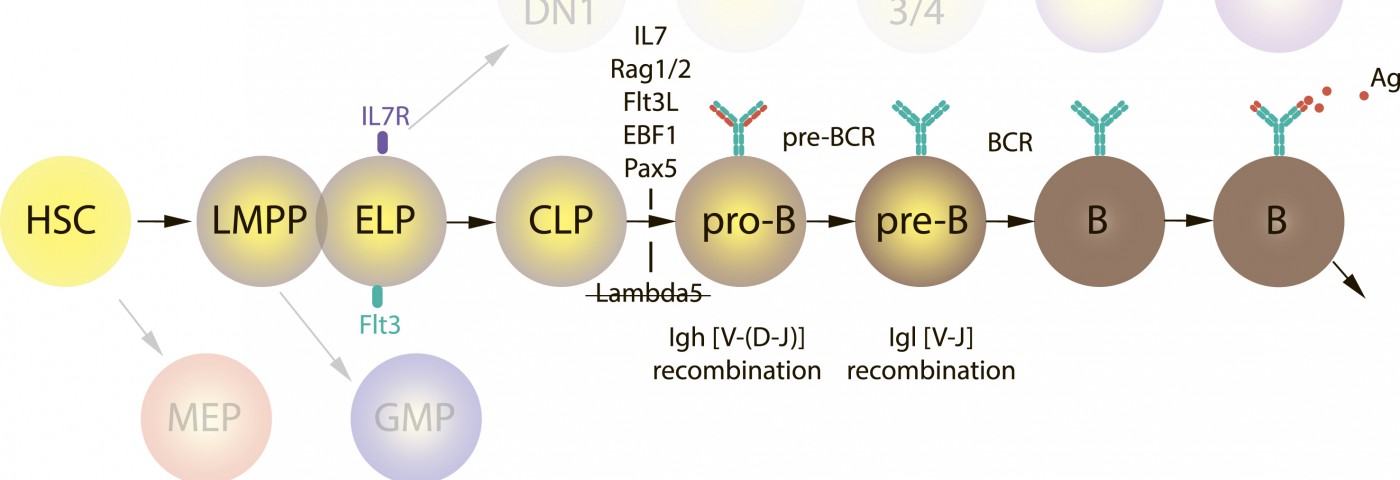In a new study, scientists discovered that two key players in B cells, PI3 Kinase and FOXO1, have opposing roles in controlling B cell proliferation and differentiation in germinal centers, with implications for B cell lymphoma development. The study, “PI3 Kinase and FOXO1 Transcription Factor Activity Differentially Control B Cells in the Germinal Center Light and Dark Zones,” was published in the journal Immunity.
Lymphoma is the most common blood cancer, and B cell lymphomas (one of the most common cancers affecting the lymphoid system) are a specific type of lymphoma affecting B cells, which include both Hodgkin’s lymphomas and most non-Hodgkin lymphomas.
B cell developmental stages are characterized by a phase of cellular proliferation followed by resting periods after which they can further differentiate or persist for long periods of time. One of these phases occurs in what are called the germinal centers (GCs), sites in secondary lymphoid organs where mature B cells proliferate and differentiate in response to infections. Antigen-activated B cells undergo cycles of proliferation and non-proliferation that take place in different zones within the GCs — proliferation in the so-called GC dark zone, followed by a non-proliferative state in the GC light zone.
A team of Max Delbrück Center for Molecular Medicine (MDC) researchers investigated which factors are involved in this differential zoning of GCs, a particularly important question since GCs’ deregulation can lead to B cell tumors, namely lymphomas. The results revealed an upregulation of the expression of the forkhead box O1 (FOXO1) transcription factor in the proliferative compartment of GCs, (the dark zone), while an increase in phosphoinositide 3-kinase (PI3K) activity (which inhibits FOXO1) was found in the GCs light zone (where cells are selected for further differentiation).
Moreover, the team discovered that in GCs light zone there is a small fraction of cells that express FOXO1, which are the ones destined to re-enter the dark zone, showing FOXO1 is required not only for the formation of GCs dark zone but also for a correct and efficient B cell response to pathogens.
The findings were confirmed by a second independent study by a team of researchers at Columbia University, published in the same issue of Immunity. Future studies should attempt to understand whether FOXO1 mutations and PI3K activation co-exist in the same cells, since this transcription factor plays an important role in the normal germinal center reaction. Moreover, “additional studies are warranted, since most B cell lymphomas arise from germinal center B cells. Also, activating mutations of FOXO1 have been detected in lymphoma patients, which points to its clinical relevance,” states a news release from the research center.


